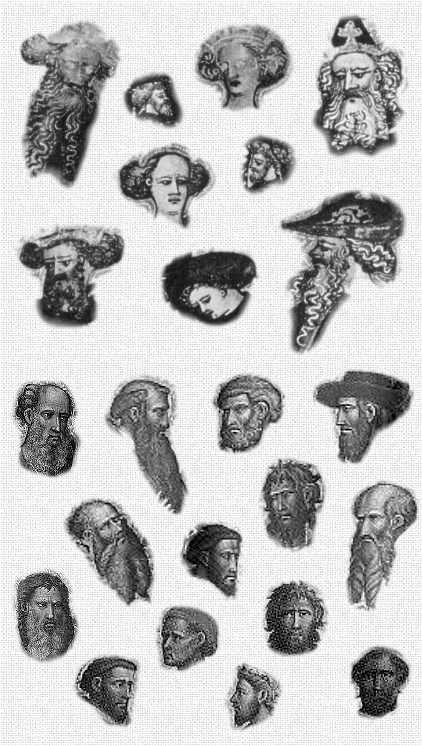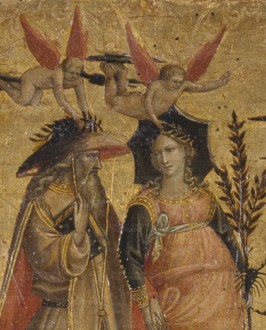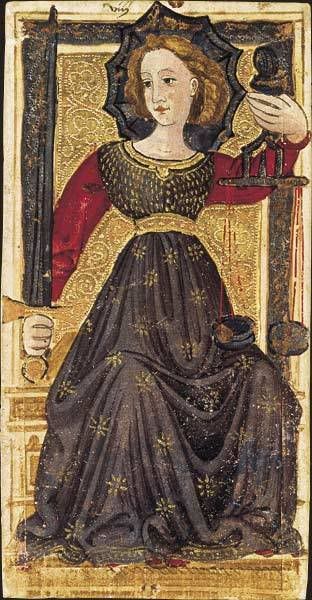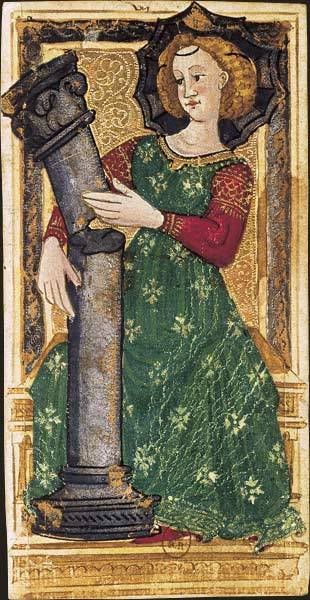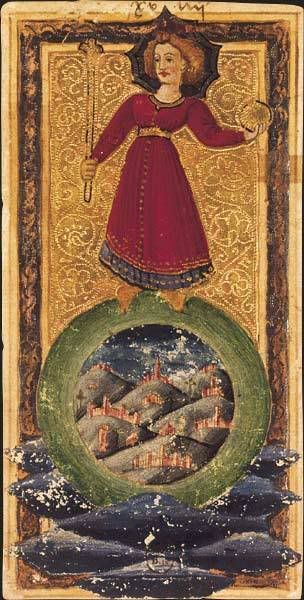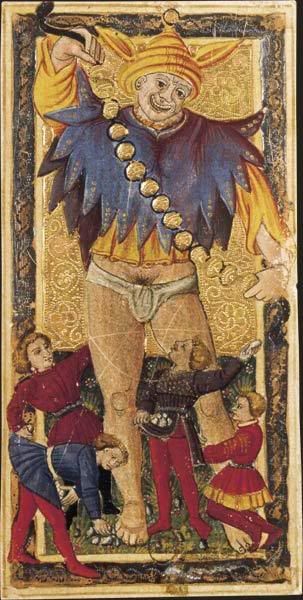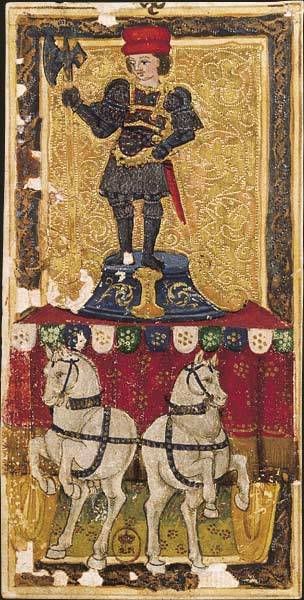One of the reasons I disputed Fiorini's, and by extension Bellosi's, attribution of the cards to Giovanni del Ponte, is because I couldn't see the same artist at work in the St. George and the Knight of Batons.
I shared these thoughts first with Michael Hurst, and he looked too; then he looked more precisely at some of what was available of Giovanni on the web, and the Rothschild cards, and came up with this collage of facial comparisons:
The top nine images are from the Rothschild cards; the bottom fourteen are from three works of Giovanni -
1---2---3---4
----------7--
5---6-------8
9----10---11
--12---13---14
Reading them as the numbers above, they are -
1 and 9: Two evangelists, Rijksmuseum, Amsterdam, SK-A-3979 and 3980 (35x14cm), dated 1410-1435
2,3,4,5,6,7 and 8: Ascension of St. John the Evangelist, National Gallery, London, NG580 (triptych, 207x250 cm), dated 1410-1420.
10, 11, 12, 13, 14: Coronation of the Virgin, Galleria dell'Accademia, Firenze (couldn't find the catalogue number or size), no date found.
Giovanni's facial proportions and style remains consistent from large to small works, and across time.
Comparing with the card's faces and heads, it doesn't seem to be the same style. Particularly noteworthy are the presence of well-formed ears in Giovanni's paintings, whereas in the cards there are few and they are little more than circles.
Also, the faces are squat, and the noses are not long in the cards, whereas all of Giovanni's faces have very long noses.
The particular way of indicating curls in beards and hair isn't so similar between the two in this side-by-side comparison.
When we consider that Giovanni was already an accomplished miniaturist (from what I understand) already since a teenager, and that the smaller Evangelists of the Rijksmuseum, not quite double that of the cards, show the same traits and detail as the larger works, it seems evident to me that it is not the same artist.
Comparing Bembo's larger works with his cards (say in Kaplan II, pp. 132 and following), it is apparent that little of the style and subtlety is lost despite the diminution of size and the other constraints of the medium. Both larger and smaller works are immediately recognizable as the same artist, particularly in the faces. The card-artist's and Giovanni's personal style seem completely different from one another.
I think that the case for Giovanni as the artist of the cards can be dismissed on the basis of stylistic differences alone. But for me the most compelling evidence against a 1420 date (if not against Giovanni, who lived until 1437 at least) is the pattern of the documentary, physical and iconographic data, as given in the chart below.
For other significant features of other cards, like the Charles VI (and Rosenwald Sheet!), like the aureoles Marco noticed in Giovanni's painting of the Liberal Arts (very good point, IMHO!), these argue I think for a Florentine provenance... but can be shown to persist much later in Florentine art.
Next post, maybe even tonight!
Ross

